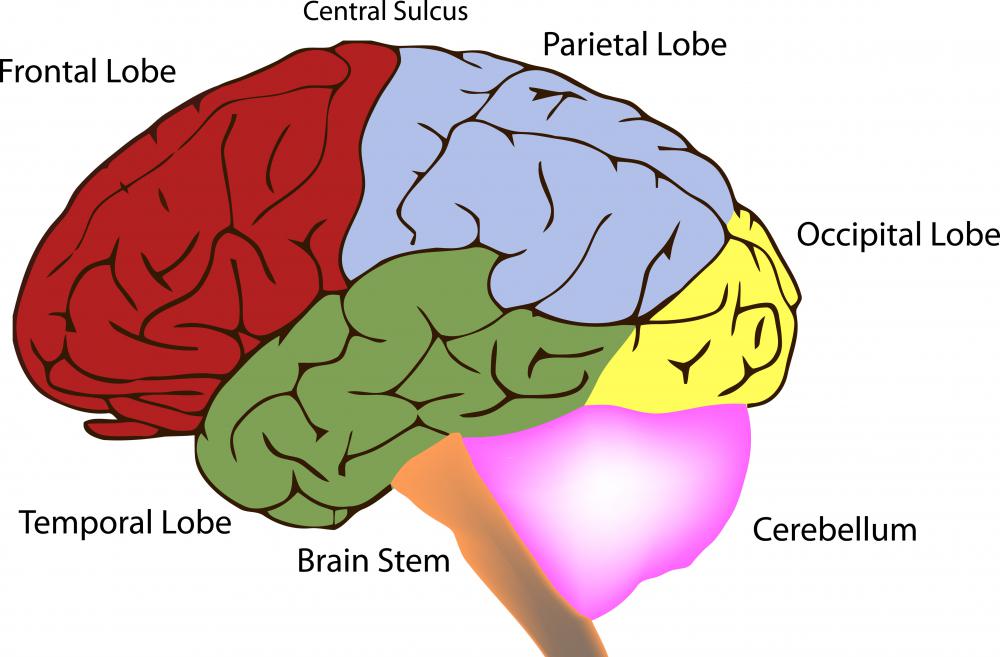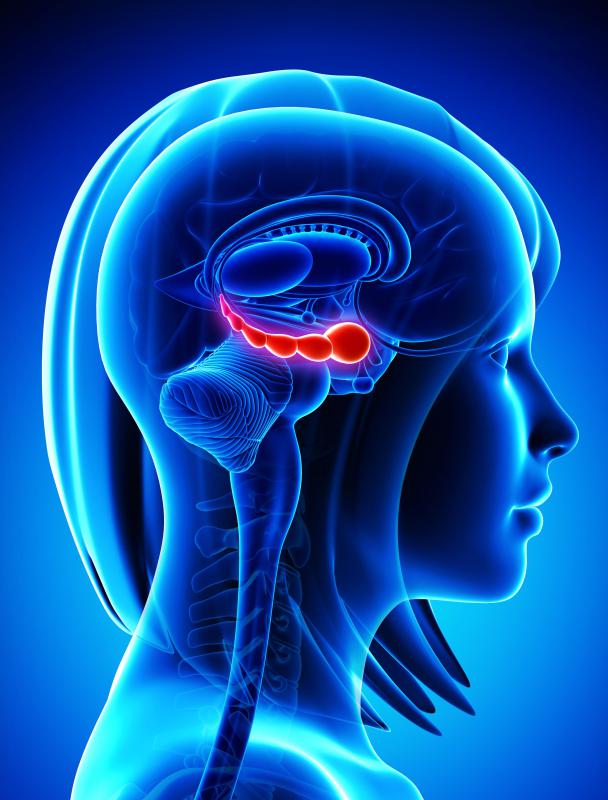At WiseGEEK, we're committed to delivering accurate, trustworthy information. Our expert-authored content is rigorously fact-checked and sourced from credible authorities. Discover how we uphold the highest standards in providing you with reliable knowledge.
What is Temporal Lobe Epilepsy?
Temporal lobe epilepsy can refer to many different types of seizure disorders that arise from abnormalities in one or both temporal regions of the brain. Physical defects, injuries, or conditions that alter electrical activity in the temporal lobes can lead to frequent seizures, sometimes resulting in several dozen fits a day. Most people with temporal lobe epilepsy are able to effectively manage their conditions with prescription drugs.
The temporal lobes are situated on the left and right sides of the head in the lower half of the brain, and are involved in hearing, memory, emotion, and many other processes. Temporal lobe epilepsy can result from several different disorders, including temporal tumors, brain injuries, severe infections, and strokes. Many seizure disorders are related to neuron death in a very particular area of the temporal lobe called the hippocampus. In addition, some people are predisposed to temporal lobe epilepsy due to genetic disorders or congenital brain defects.

The symptoms associated with temporal lobe epilepsy vary depending on the underlying cause and the precise location of the abnormal electrical activity. Most forms of epilepsy result in simple and complex partial seizures, meaning only one lobe is affected. Simple seizures typically last for a few seconds at a time and do not cause a loss of consciousness. A person might have distorted vision, hallucinations, muscle twitches, and increased heart rate. A patient can usually remember having a seizure, though he or she may be unable to describe what happened during an episode.

Complex partial seizures can last anywhere from a fraction of a second to several minutes at a time, and generally result in a loss of consciousness during the event. A person may suddenly stop moving and talking and exhibit head, arm, and leg convulsions. After a seizure, an individual may notice numbness or tingling sensations as well as abdominal pain and nausea. Most people who have complex partial seizures do not remember them. It is important for a person who has a seizure to be brought to the emergency room following an episode, especially if it has not happened in the past.

A neurologist can diagnose temporal lobe epilepsy by performing an electroencephalogram (EEG) and taking magnetic resonance imaging scans of the brain. EEG tests can confirm that electrical activity is unusually slow or varied, and diagnostic imaging tests can reveal underlying damage to the temporal lobe. In many cases, frequent follow-up EEG tests are needed to make sure that results are accurate.

Treatment for temporal lobe epilepsy depends on the cause, but most patients are able to manage their disorders with anticonvulsant drugs such as phenytoin or carbamazepine. Patients who take their medications and attend regular checkups have less frequent and severe seizures, and some people stop having episodes altogether. Surgery to remove tumors or correct brain damage may be necessary in some cases to provide patients with the best chances of recovery.
AS FEATURED ON:
AS FEATURED ON:

















Discuss this Article
Post your comments